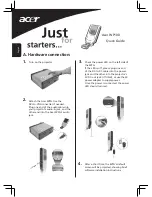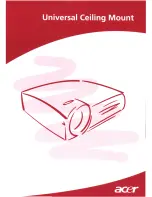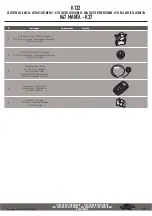
5-27
Chapter 5 AN100U/UX Troubleshooting
Redline Communications Inc. Confidential and Proprietary
Link Optimization and Reference RSSI
Aside from field characteristics such as antenna alignment and positioning, the primary
method of optimizing a sector controller's wireless performance is by adjusting the
AN100U/UX's Reference RSSI. This is an increasingly difficult parameter to set properly
as the number of SU's per sector increases. It is vital to have a good understanding of this
parameter since it has both an immediately obvious effect, as well as a subtle yet equally
important effect.
The obvious impact is on the Tx power of the SU, and therefore the uplink RSSI of that
particular SU. Assuming that the AN100U/UX is configured with Tx Power Control
enabled (highly recommended), then the Tx power of each subscriber unit in the sector will
be controlled such that the RSSI as measured by the AN100U/UX will be set as close as
possible to the reference RSSI.
The subscriber unit can only be set to the approximate reference RSSI, in the case of SU's
with a high level of path loss along their link, it is possible for the subscriber unit to reach
its maximum Tx power and still be lower than the reference RSSI. This situation should be
avoided, if at all possible.
The less-obvious impact of setting this parameter is that it directly controls the gain along
the AN100U/UX's IF cable. Since the AN100U/UX does not support automatic gain control
(AGC, it cannot adapt its IF gain for each SU. That means that a single gain value must be
applied to all SU's. The gain, as received at the Phy, (the device in the IDU which performs
the actual decoding of the OFDM signal) must be as close to -16dBfs, as possible. The
Reference RSSI configured in the Wireless Interface page specifies the target RSSI for all
SU's, which means that the AN100U/UX can calculate what the IF gain must be in order
to achieve -16dBfs.
For example, if the AN100U/UX's Reference RSSI is set to -63dBm, then due to path-loss,
the subscriber unit can only achieve an uplink RSSI of -80dBm even when transmitting at
its maximum power of 20dBm.
RfRSSI
This value represents the signal strength as received by the subscriber unit before
internal amplification. It is this value that should be used during alignment, as it will
actually change to reflect signal strength (unlike the Rssi value, which should remain
fixed!).
Total CRC
Errors
Ideally, this value would remain at 0. It is normal however even good links to
experience occasional CRC errors. If you see CRC errors continuously however, this
is an indication of link instability. You should check for wireless interference, wireless
reflections or refractions, and you should also verify that adaptive modulation has not
been disabled, and the Snr is high enough to support the SU's minimum coding level.
This can be checked using the command "show modThresh Rate1Exit"
Table 5-8
Subscriber Unit Statistical Parameters (continued)
Parameter
Description
















































